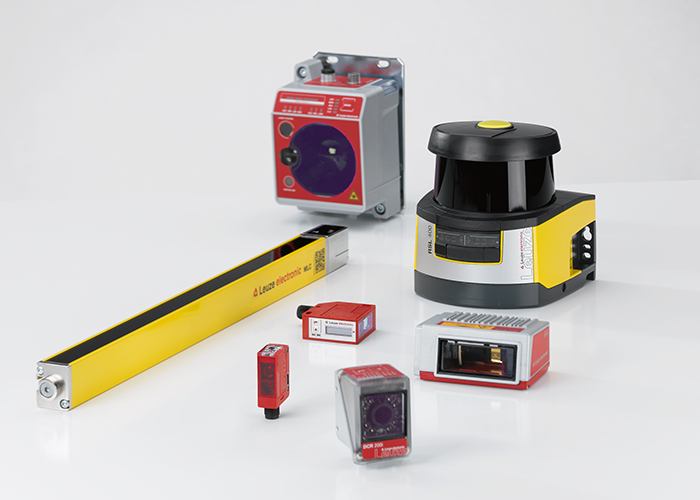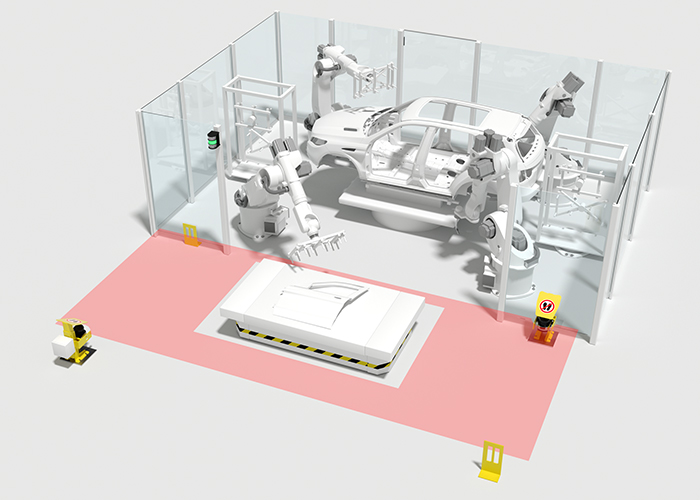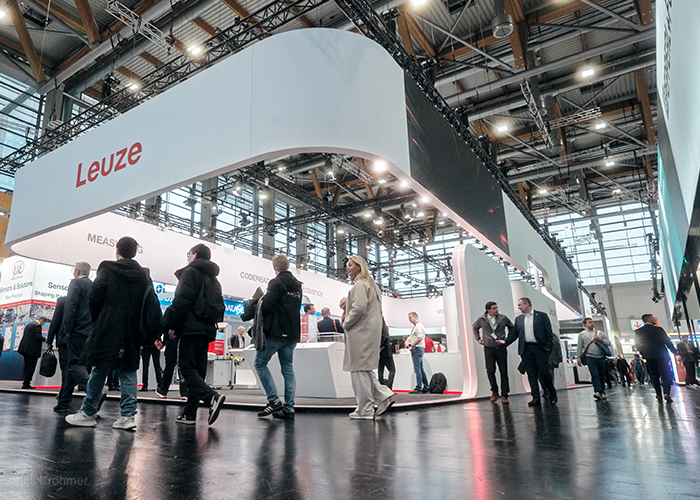OPC UA: Five letters for increased transparency
The OPC UA standard facilitates a more efficient evaluation of machine and device data. System operators benefit from new possibilities with OPC UA certified sensors from Leuze.
The pyramid becomes permeable
Whether Industry 4.0, IIoT or machine-to-machine communication - machines, systems and products can only be networked using suitable standards. Experts often mention the automation pyramid in this context: depending on the definition, this ranges from the lowest level, the device level, via the field, control and process control level to the tip of the pyramid, the management level. The standards for data exchange across levels offer varying options: while machines and devices exchange data at field level and to the control level using the relevant protocols such as IO-Link, PROFINET, Ethernet/IP, EtherCAT or Ethernet TCP/IP, the direct path to the higher levels of the automation pyramid remains blocked. This is because a fieldbus does not scale all the way to the cloud, nor are protocols such as MQTT capable of communicating with the field level. The OPC UA framework (UA = Unified Architecture) closes this gap. Leuze sensors with OPC UA certification allow system operators to benefit from additional options.

The OPC UA standard connects the levels of the automation pyramid.
From the field to the cloud
Up to now, there was no universal protocol that allowed all machines, devices and servers to communicate with each other across all levels. The reason: protocols must meet very specific requirements on their respective level. It is impossible to replicate everything in one protocol. Nevertheless, machines and devices generate a lot of valuable data. The levels that could evaluate this data, however, often do not have the option to directly access and interpret this data. This is where OPC UA creates a connection. It is not a protocol, but a framework, a collection of technologies. The principle behind it: OPC UA uses an information model to define the data that are transmitted. The standard regulates access permissions at the communication level and defines the protocol for data exchange. As a result, the levels of the automation pyramid which were separated up to now become permeable and develop into an open network structure. As freely available open source, OPC UA functions independently of manufacturers and software platforms.
Faster installation
To enable data to be exchanged across all levels of the automation pyramid, they must be systematically prepared and made available. Because even if communication standards are defined, the following applies: when a device outputs a numerical sequence, metadata is required by the receiver. This is the only way this numerical sequence can be interpreted correctly, for example as a unit. Here, the information model from the OPC Foundation comes into play. It describes the connected devices as a network of different objects. First, the relationships between the nodes are regulated. On a second level, standard attributes are defined – these are the minimum requirements to allow a device to be recognized in a network. In addition, special attributes such as capabilities and actions of machines can be defined. This creates a structure which can be read automatically. As a result, data can now be read and interpreted by other OPC UA-certified devices. Practical: Industry standards are available so manufacturers do not have to create specifications from scratch for every device. These companion specifications describe how, for example, 1D-bar code readers are defined and which values and events they make available. They are provided for download by the OPC Foundation in PDF and XML format. This means that the specifications are machine-readable and do not have to be transferred manually.
Information types to be stored in the data model of a device:
- Data for identifying the device in the network
- Process data and events (for example reading results of a scanner, start/stop command)
- Quality data (e.g. successful and failed read processes of a scanner)
OPC UA therefore offers considerable advantages for installation. For example: When the Leuze BCL 348i bar code reader identifies itself as a 1D-bar code reader in the network and the control level understands this signal, the device characteristics are detected automatically (AutoID). The result is a particularly quick integration into the system. System maintenance is also simplified, because alarms as well as error and status messages of individual devices can be recorded centrally and evaluated in a standardized way.

The BCL 348i 1D-code reader from Leuze is OPC UA-certified. This makes it compatible with the technical requirements in accordance with OPC UA and can transfer data to the management level.
Safe in the network
OPC UA also contributes to increased IT security. A requirement that is becoming increasingly important in times of IIoT - machine data must be processed for the industrial internet of things via the cloud. An advantage for system operators is that end-to-end encryption is already integrated in the OPC UA standard. Company data is effectively protected against external attacks. It also makes it easy to assign internal permissions. As it is specified who can access, read, evaluate or change data, risks such as downtime due to attacks or incorrect operation are minimized.
Systems are easier to monitor
One of the greatest strengths of the standard is the possibility to significantly increase system efficiency through data evaluation. Machines and systems are easy to monitor via OPC UA and processes can be optimized. This can be illustrated using a practical example: In a small-parts warehouse, a conveyor line transports boxes containing goods to the picking stations and to the shipping area. The boxes each have a bar code label. BCL 348i 1D-code readers from Leuze are mounted along the conveyor line and supply the data required to transport the boxes on the conveyor line. Due to use, the optics of the scanner can soil over time, resulting in the labels on the boxes no longer being cleanly detected. On the other hand, labels can also be subjected to stresses during operation and may no longer be readable due to damage or soiling. How does the operating company find the error?
Quick access to relevant data
In the conventional way - without OPC UA - sensors can be accessed using a diagnostic computer. Because they store values such as the share of failed reading attempts, it is possible to identify scanners which are contaminated or otherwise impaired. The disadvantage: the system operator has to control and read out each device separately. This is an extremely time-consuming task, in particular when identifying impaired labels. In this case, employees need to read out each scanner separately and manually put the data in context. This can be done much more efficient using OPC UA and suitable sensor technology: the BCL 348i 1D-code readers from Leuze are OPC UA-certified - making it possible to transfer the scanner data to the control level. With a simple application, they can be evaluated centrally and visualized in a dashboard, for example. This shows in real time whether a scanner has an unusually large number of failed attempts. An additional advantage: as the installation location of the sensor is also transmitted, service can work on it directly. If it is determined that all scanners have difficulty detecting a specific label, this label can similarly be replaced in a targeted manner. In summary: a significant gain in maintenance efficiency and a simple method to increase system availability.

Without OPC UA, the time required to identify faulty labels or impaired scanners is significantly higher in most cases.
Benefit from certified sensor technology
In just a short time, OPC UA has established itself as a central framework for data transfer from the field level to the cloud. The levels of automation systems, which were previously arranged in a strict hierarchy, now become permeable. Among others, this contributes to an efficient evaluation of machine and device data. However, the advantages of the standard for installation, optimization of ongoing operations and service can only be used with suitable sensor technology. Here it is recommended to rely on sensor experts who have a product range that includes OPC UA-certified products and the corresponding know-how. The Sensor People from Leuze are always available as contact persons. With innovative OPC UA-certified Leuze sensor technology such as the DCR 248i 2D-code reader and the BCL 348i 1D-code reader, operators can elevate their systems to a whole new level of efficiency.

OPC UA-certified scanners such as the DCR 248i are also available for 2D-bar codes. For the efficient utilization of IIoT and Industry 4.0, Leuze is consistently equipping additional product lines with OPC UA.






